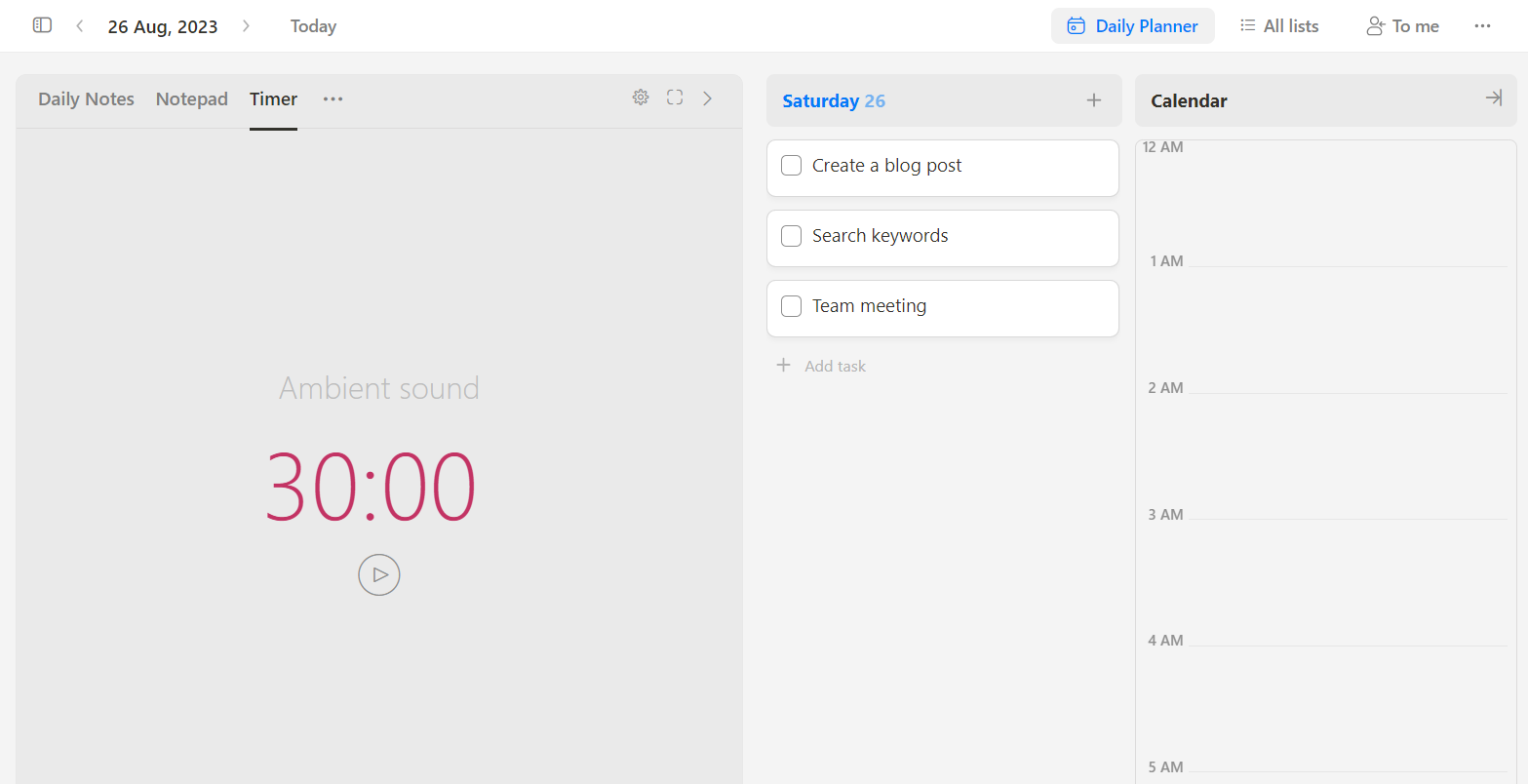What is the Ivy Lee Method?
What was it about this method that led Charles Schwab, the American steel magnate, to happily write a $25,000 check to its creator?
And does this century-old productivity technique still hold its value in today’s fast-paced world?
This article holds the answers you seek. So, don’t miss out—read on until the very end.
I. What is the Ivy Lee method?
1. The story
Look at this photo! 👇

His name is Charles M. Schwab (1862-1939):
- President of the Bethlehem Steel Corporation—the U.S. second largest steel producer at that time.
- One of the world’s richest men at the beginning of the 20th century.
The story began on one day in 1918.
In his quest to explore better ways to help his team increase productivity, Schwab met Ivy Ledbetter Lee—a highly-respected productivity consultant.

Ivy Lee (1877-1934), is regarded as the Father of modern Public Relations.
He asked Ivy Lee to show him and his executive team a way to do more in the same amount of time they’d always had.
Lee replied that give him 15 minutes with each executive.
But what’s unexpected was when Schwab asked Ivy Lee about the price, the productivity expert said:
-Nothing. Unless it works. After three months, you can write me a check for whatever you feel it’s worth to you.
Ivy Lee then guided Schwab and his team through a simple method.
Nobody knows exactly how much the progress of Schwab’s company had made after trying the method.
It’s only reported that after three months of use, Charles Schwab wrote Lee a $25,000 check with a big smile.
($25,000 in 1918 is equivalent to about $500,000 in today’s money.)
Also since then, the method has become popular and is called the Ivy Lee method.
So, how did Ivy Lee guide those executives?
2. How the Ivy Lee method works
The method is a simple four-step process:
Step 1. At the end of each working day, write down the six most important tasks you need to complete the following day.
Step 2. List these six in order of importance, with the most important task being #1 and the least important task being #6.
Step 3. The next day, concentrate on the first task until it’s done. Only move on to the second task once you complete the first one.
Step 4. Repeat the process each work day.
If there are unfinished tasks, carry them over to tomorrow’s list and rearrange the to-do list’s priority as needed.

3. FAQs
i. Is the “six tasks” a must?
No, you can adjust your to-do list based on your average daily workload.
If you’re new, give the standard Ivy Lee method a try for a week or two to determine how many tasks on average you can complete each day. Then, make adjustments accordingly.
However, it’s recommended to keep the list to no more than six tasks. Having fewer priorities leads to better work, they say.
ii. How to prioritize the six tasks using the Ivy Lee Method?
The six tasks should be the most impactful and contribute to your overall goals.
iii. Can I work on multiple tasks while using the Ivy Lee Method?
No, the method suggests focusing on one task at a time for achieving peak productivity.
II. Why does the Ivy Lee method work so well?
“How could such a deceptively simple method be worth a $25,000 check?” – you might be wondering.
Here are the reasons why the Ivy Lee method is so effective:
1. Imposing Limits on Tasks
The Ivy Lee method hinges on a system of selecting a small number of essential to-dos each day.
By imposing limits, it prevents overwhelming to-do lists, allowing you to concentrate on important things.
2. Priority and Single Task Focus
At its core, the method is built around priority.
By focusing on just one task at a time, it enables you to allocate your valuable time and energy to that task, ultimately enhancing productivity.

3. Reducing Decision Fatigue
Lee’s method forces you to decide on your next task the night before, eliminating the need for morning decisions.
This decrease in decision fatigue empowers you to start your day with a clear mind and strong resolve, directing your energy towards important to-dos.
4. Building Motivation
Every to-do that you complete nurtures a sense of accomplishment.
This feeling of fulfillment creates a positive momentum that propels you through your tasks, ultimately enhancing overall productivity.
5. Aligned with Cognitive Patterns
Did you know that our brains aren’t designed for multitasking?
In fact, they operate most efficiently when we focus on one task at a time. This approach enables us to perform tasks with heightened precision and efficiency.

And Lee’s method facilitates our minds to function optimally that way.
In short:
The Ivy Lee method might seem stupidly simple, but what truly counts is it aligns with fundamental principles of productivity.
Its effectiveness hinges on how it streamlines prioritization and focus, rather than just its simplicity.
This is also what makes the method timeless!!
Even today, numerous individuals find the method highly effective. Take, for instance, John Rampton—an entrepreneur.
In his article for Entrepreneur, he highlights how the method assists him in prioritizing important tasks and cultivating productive work habits.
Ultimately, this affords him more time to spend with his family.
III. Tips for making the most of the Ivy Lee method
Here are a few tips to help you make the most of the Ivy Lee Method:
1. Prioritize with Strategy
When you’re crafting your tomorrow’s to-do list, try the Eisenhower Matrix method.
This is a renowned prioritization method that categorizes tasks into four quadrants based on their importance and urgency.

This allows you to allocate tasks more strategically within the Ivy Lee system.
2. Break It Down and Set Deadlines
Big tasks? No problem.
Break them down into smaller, doable chunks. Then, sprinkle some deadlines on each to-do.
This creates a neat and organized daily schedule that stops overwhelming and keeps you productive, even for those more complex projects.
3. Embrace the Pomodoro Technique
Imagine working on a to-do while sprinkling in a dash of concentration-enhancing magic.
That’s the Pomodoro technique for you.

This rhythm syncs beautifully with the Ivy Lee Method’s dedication to deep concentration.
It’s like giving your productivity an energy drink.
4. Friend Up with Productivity Apps
Let’s be pals with technology.
There are apps out there that play nicely with the Ivy Lee Method. They make sure you’re sticking to the plan, dedicating quality time to each task.
With these apps, the Ivy Lee Method gets a digital makeover, blending timeless wisdom with modern convenience.
IV. How to use the Ivy Lee method with Upbase
So, you decide to get aboard the Ivy Lee Method train, and we’re here to make it a breeze to put it into action using Upbase.
Ready to roll? Here’s how:
A. Plan
The night before, schedule the six tasks you want to accomplish the next day on the “Daily Planner” page.

Click “+ Add task”, type the to-do name, and press “Enter”.
If you need more oomph, click on a task card to add its note, priority, start and due time, etc.
Break any tasks that require more than one hour to complete into smaller subtasks.
For example, a to-do named “Create a blog post” might need subtasks like “Create outline”, “Write the blog post”, and “Proofreading and reviewing”.

Upbase Tips:
-Reorder tasks with a simple drag-and-drop dance.
-Assign an “Urgent” tag to tasks that need your superhero attention.
-Hover over a card and press S to set the high priority. Press D to open the Due date picker. Press C to open the Tag picker.
Next, schedule tasks onto the calendar and adjust their duration. Remember to add a short break between tasks.
B. Work
On the next day, with your to-do list at the ready, pick that top one and concentrate on executing it.
Need an extra boost? Cue the Pomodoro timer and throw in some ambient sounds.
And remember that once your timer starts, it must go off!
Keep focused by adding any random thoughts or requests that come in as new tasks in your Upbase Notepad.

Then, when your timer runs out, you can schedule these new tasks for the next concentration intervals, and readjust your list.
C. Reflect
At the end of your day, assess your experience with the Ivy Lee Method using Upbase’s Daily Notes.

Reflect on how effectively you’ve managed to prioritize tasks, allocate time, and maintain your concentration.
Fine-tune your approach based on your observations to make the method align better with your unique work style and goals.
D. Repeat
Rinse and repeat.
Flex your concentration muscles by using the Ivy Lee method as a daily routine.
Upbase Tip:
Add a to-do in Upbase for the same time each night/evening to remind yourself to reflect on your day and plan out the next day.
Don’t worry about the price because Upbase offers one of the most generous free plans on the market.

Combine with other productivity methods for achieving ultimate concentration and task-wrangling. Upbase and Ivy Lee got your back! 🚀
Sign up for a free Upbase account now and skyrocket your productivity.
